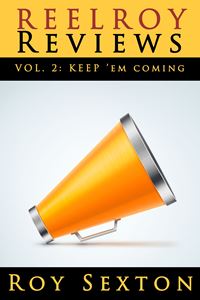No film in the Pixar canon, though, can compare for sheer WTF meaning-of-life audacity to their latest Inside Out. I loved this movie for its gentle heart, its minimalist humor, and its sly message that all emotions are valid and essential, not just that most-favored nation: technicolor, buoyant, “have a blessed day” joy.
The film details the awkward transition of a sweet, beloved only child (Riley, charmingly voiced by Kaitlyn Dias) as she and her parents relocate from their small-town home in Minnesota to the big city life of San Francisco. The transition isn’t an easy one, as the family’s belongings are lost mid-transit, Riley finds herself missing friends and activities from her previous life, and her new school offers little reprieve. Complicating (or causing?) these challenges are a series of misadventures from the voices living in Riley’s head.
When I saw the first preview several months ago, I admit I was dubious about the central conceit: that our emotional inner life can be distilled into five warring character traits: Joy (Amy Poehler), Anger (Lewis Black), Disgust (Mindy Kaling), Fear (Bill Hader), and Sadness (Phyllis Smith). From the looks of things, I feared that Pixar had swiped the concept of that odd 70s construct Mr. Men and Little Miss, whereby we Me-Era kindergartners learned about our thorniest of emotions and the need to share and play well with others via a series of easy-to-read, infinitely merchandised board-books. And lest we not forget the acid trip “Free To Be You and Me” musings of holiday specials from Rankin/Bass and Sid and Marty Krofft where the fight for one’s psychological well-being could be enacted through feuding Claymation characters representing weather fronts or trippy sea monsters and Phyllis Diller witches. How we Gen X’ers survived, I’ll never know.
(We also had the short-lived, early 90s sitcom Herman’s Head, likely crafted by someone weaned on the animated output of the Children’s Television Workshop but with a naughtier spin, in which a young writer had every decision dictated by a group of wise-cracking Jiminy Crickets cohabiting in his cranium. Interestingly, that show, like Pixar’s Inside Out, was executive produced by Disney.)
How wrong I was! (And apologies for the digression into artifacts of my childhood – Inside Out is so good, you can’t help but plumb the depths of your youth upon exiting the theater.)
The film does share its DNA with earlier cinematic/television efforts to explain psychology to kids and adults alike, but it is also very much its own unique creation. Director Peter Docter (who helmed Up as well as Monsters, Inc.) is in his element constructing richly detailed mythology for us all to understand and appreciate the colors (quite literally) of our emotional responses. With Inside out, the primal depth of Up (I dare you not to watch the opening sequence of that film and find yourself in poignant Ingmar Bergman puddle) finds a new home in the Rube Goldberg whimsy of Monsters, Inc. as Docter and his team give us an Oz-like travelogue through the various geographies in one’s brain.
After a mix-up involving some precious long-term memories, sending Riley on a prepubescent spiral of self-doubt, Joy and Sadness find themselves on the unlikeliest of road-trips, navigating Riley’s id, ego, and superego in order to right a sinking ship.
There are many clever asides and surprises along the way, and I dare not spoil a one. I will note, however, that I guffawed loudest at a bit where Joy stumbles over what appears to be a large box of placards, jumbling them all. She comments, “Oh, facts and opinions, who can tell them apart?” In these contentious times, truer words may have never been spoken in an animated film.
At the halfway point, the heartbreaking soul of the film makes his shaggy, sad-sack appearance. Richard Kind is exceptionally voice-cast as Riley’s elephant-nosed, cotton candy-bodied, cat-tailed imaginary friend Bing Bong. As Riley’s life has evolved, Bing Bong has become a stranger in a strange land, a Didi/Gogo whose tears take the form of cellophane-wrapped candy pieces. As he assists and occasionally misleads Joy and Sadness from the dark recesses of Riley’s brain, he insinuates his way into the audience’s heart, and his ultimate sacrifice (not saying what) is as devastating a moment as you’ll see in cinemas this year. (At least it was for this weirdo who still personifies all of his childhood toys and can’t bring himself to part with a one.)
The film’s final message for us all? (One I find so very important.) Every feeling is valid and shapes who we are. Sadness is as crucial as joy, anger as essential as fear or disgust. To force happiness when it isn’t immediately evident is to cause even greater sadness and disruption. Embrace who you are and how you feel in the moment, and embrace that honesty in others as well. We will all be that much happier as a result.
____________________________
Reel Roy Reviews is now TWO books! You can purchase your copies by clicking here (print and digital) In addition to online ordering at Amazon or from the publisher Open Books, the first book is currently is being carried by Bookbound, Common Language Bookstore, and Crazy Wisdom Bookstore and Tea Room in Ann Arbor, Michigan and by Green Brain Comics in Dearborn, Michigan. My mom Susie Duncan Sexton’s Secrets of an Old Typewriter series is also available on Amazon and at Bookbound and Common Language.

